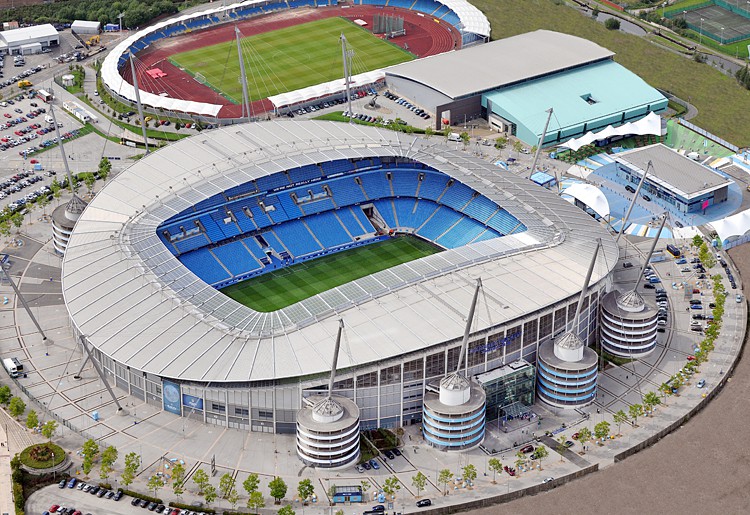The extraordinary plan to level Manchester city centre and start again

Manchester had a big plan after the war. The plan was to rebuild the city in a new way. The city was old and had many buildings from the past. The streets were small and full of smoke from factories. The idea was to tear down almost everything and build a modern city. The plan was made in 1945. The goal was to make the city better for the people. It would have big roads, new buildings, and more green spaces.
The city surveyor, Rowland Nicholas, wrote a 300-page plan. The plan said only 20 buildings would stay. Important buildings like Kendals, the cathedral, and the Central Library would not be destroyed. But even the town hall was not safe. The plan imagined Manchester as a clean and beautiful city. The plan wanted to remove all the smoke and dirt from the Industrial Revolution. The city would have fresh air and open spaces.
Planners thought about what a city should look like. They wanted Manchester to be modern and beautiful. The idea was to make separate areas for work, homes, education, and fun. This meant old mills, warehouses, and offices would be removed. There would be new wide streets with trees. Big buildings would replace the old ones. A new railway station was also planned. It would be near the place where Salford Central is today. Another big station called Trinity Station was also part of the plan.
The city center would have a large road called a processional way. It would go from the new town hall to a huge law court. There would be big green spaces around important buildings. The canals and small rivers in the city center would be covered. The Irwell and Medlock rivers would no longer be visible. Piccadilly Gardens would turn into an entertainment center. It would have a cinema, theatre, dance halls, restaurants, and a boxing stadium. It would be a place for fun and relaxation.
The plan focused a lot on cars. A new road system was part of the design. The roads would allow fast and smooth travel for many cars. There would also be new bus terminals and big parking areas. The idea was to finish most of the work by 1975. The whole city would be rebuilt within 50 years. The cost was not easy to estimate. Nicholas believed that the cost did not matter as long as the plan was good for the city.
He wrote about the future in his plan. He believed that people had two choices. One choice was to let the city stay the same. That would mean dirt, old buildings, and traffic problems. The other choice was to build a new Manchester. This would be a city full of life, culture, and growth. He wanted the second choice. He wanted the city to be modern, clean, and organized.
Even though the plan was big, only some parts of it were built. Some of the ideas became real, but not in the way Nicholas imagined. For example, the Mancunian Way was built. There were also slum clearances in the 1950s and 1960s. Many old houses were removed to make way for new ones. Some areas of the city changed, but most of the old city remained. The full plan never happened. Many people now think that was a good thing.
Manchester is still a mix of old and new. The town hall, the old mills, and many historic buildings still stand. If the plan had been followed, many of these buildings would be gone. The city would look completely different. The plan was very ambitious, but it was not practical. It would have taken too much time and money to destroy and rebuild everything.
The idea of rebuilding the city came from a good place. Planners wanted a better life for the people. They wanted fresh air and open spaces. They wanted to separate areas for work and homes. They wanted modern transportation. But the reality was different. Cities grow over time. They cannot be built in one big project.
Some cities in the world were rebuilt after the war. In Germany, cities like Dresden and Berlin had to rebuild after being bombed. They had no choice but to start again. But Manchester was not destroyed. It was damaged, but not completely ruined. That is why the plan was not needed.
Many people loved Manchester the way it was. It had history and character. The old buildings told the story of the city’s past. If everything had been removed, Manchester would have lost its identity. Many of the small streets, old shops, and markets would have been gone. The people of Manchester had a strong connection to these places. They did not want to see them disappear.
Nicholas’ plan was full of big dreams. He imagined a city of the future. He wanted wide boulevards, new stations, and large parks. He wanted a city that was organized and clean. But cities are more than just buildings and roads. They are about people, culture, and history. That is why the plan was never fully followed.
Even though the plan did not happen, some ideas from it were useful. The need for better roads was real. That is why roads like Mancunian Way were built. The idea of having green spaces was good. That is why some parks and open areas were improved. The plan showed that Manchester needed change. But the change happened slowly and naturally.
If Manchester had been rebuilt completely, it would be a very different place today. The town hall, the old warehouses, and the historic streets would be gone. Instead, there would be modern buildings and big highways. The city would have lost its unique look and feel. Today, people appreciate the mix of old and new. They enjoy the historic buildings while also seeing new developments.
The lesson from this story is that big plans do not always work. Cities change over time. They do not need to be completely destroyed and rebuilt. Manchester found a way to improve without losing its past. The old and the new exist together. That is what makes the city special.
The plan of 1945 was exciting and bold. But it was also unrealistic. It was too expensive and too big. It ignored the history and culture of Manchester. That is why it was never fully done. But it still remains an interesting part of the city’s history. It shows what could have been. And it reminds us to plan carefully for the future.
Today, Manchester continues to grow and change. There are new buildings, new businesses, and new ideas. But the city still respects its past. The old mills, the historic streets, and the famous landmarks still stand. The city has found a balance between old and new. This balance makes Manchester a great place to live and visit.
If the 1945 plan had been followed, Manchester would be unrecognizable today. It would be a completely different city. But by keeping some of the past and adding some of the future, the city has remained strong. It has kept its identity while also moving forward.
People still talk about the plan today. Some wonder what it would have been like if it had happened. But most agree that Manchester is better the way it is. The city has grown naturally, and that is the best way for a city to grow.
Nicholas had a vision. He wanted to create a perfect city. But perfect cities do not exist. Cities are always changing. They grow, adapt, and evolve over time. That is what makes them special. Manchester has done just that. It has found its own way to improve while keeping its history alive.
The 1945 plan was never built, but it still teaches us a lesson. Change is important, but so is history. A city must respect its past while planning for the future. That is what Manchester has done. And that is why it is still one of the most unique and beloved cities in the world.















